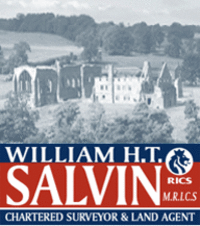


Local Sponsors
-
William Salvin Chartered Surveyors
The Estate Office Egglestone Abbey Barnard Castle DL12 9TN
Since 1992 we have provided a dedicated Estate Management Service for a number of private clients in County Durham and North Yorkshire.
-
The Tees Rivers Trust
The Clocktower Lodge, South Park, Darlington, DL1 5TG
The Tees Rivers Trust has been established to protect and enhance the environment of the River Tees and its catchment, and to encourage public understanding and community involvement.
More information
Many thanks to William HT Salvin Chartered Surveyor and Land Agent for facilitating this camera's location and to The Tees Rivers Trust for capitally funding its installation. The River Tees originates on the eastern slope of Cross Fell in the Pennines. It then flows eastwards for approximately 85 miles until it reaches the North Sea between Hartlepool and Redcar. The river encompasses a drainage area of 708 square miles and does not receive any significant tributaries. The head of the valley, known as Teesdale, possesses a desolate grandeur, surrounded by hills, some of which exceed 2500 feet, and bleak moorland. This area is a part of the North Pennine Area of Outstanding Natural Beauty, which has recently been designated a geological Europark, making it the first of its kind in the UK.
Perched high above the river, the castle and bridge are notable features of the landscape. The bridge is believed to have been constructed or rebuilt in 1569, although a stone on the parapet suggests the year 1596. It is likely that previous bridges existed in this location before the 16th century, and the current bridge, which has undergone significant alterations, may be the last iteration. The castle's exact history is not mentioned in the provided text.Egglestone Abbey, a ruined Premonstratensian abbey, is situated on the southern bank of the River Tees, approximately 1.5 miles southeast of Barnard Castle in northern England. Originally within the North Riding of Yorkshire, it has been part of County Durham since 1974. The site buildings are protected as a Scheduled Ancient Monument and are maintained by English Heritage, with free admission.The abbey was established in the late 12th century, likely between 1168 and 1198, possibly by a member of the Multon family. The Premonstratensians, also known as the White Canons due to their white habit, founded the abbey. They followed a code of austerity similar to that of the Cistercian monks, although they were exempt from strict Episcopal discipline. The abbey's location was chosen for its isolation, proximity to the river, and the availability of local stone for construction. The original church at Egglestone Abbey was enlarged and partially rebuilt approximately one hundred years later, and this later church is the surviving structure seen today.Throughout its history, Egglestone Abbey faced financial difficulties and struggled to maintain the required number of canons. The abbey suffered damage during invasions by Scottish forces and was further impacted when rowdy English soldiers were billeted there in 1346 on their way to the Battle of Neville's Cross near Durham. In 1540, King Henry VIII dissolved the abbey. The lands were later granted to Robert Strelly in 1548, who converted some of the buildings into a grand private house. However, this house was eventually abandoned in the mid-19th century. Portions of the abbey were dismantled, and some of the stonework was repurposed to pave the stable yard at the nearby Rokeby Park in the 19th century. The ruins of Egglestone Abbey were listed as Grade I in 1987, signifying their historical and architectural significance.


